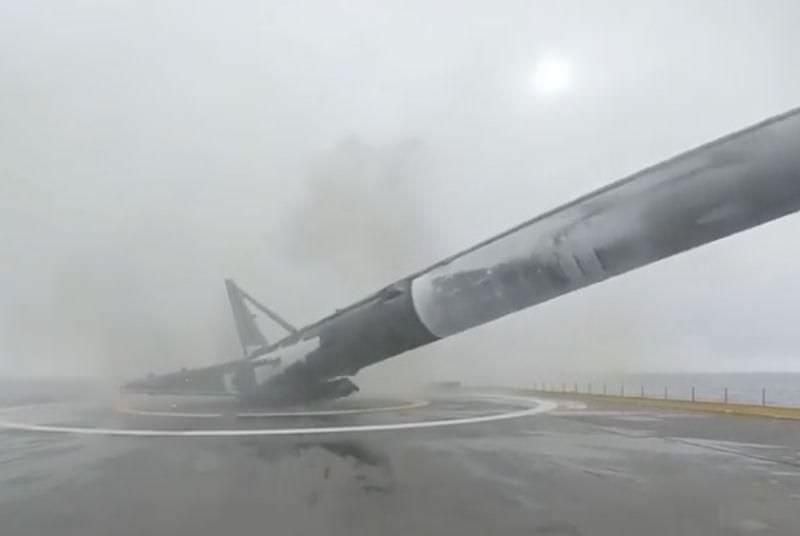
See landing video below
SpaceX came much closer to sticking the landing of their Falcon 9 rocket on a tiny droneship at sea than initially thought, as evidenced by a dramatic video of the latest attempt to recover the booster by making a soft ocean touchdown on Sunday, Jan. 17, after successfully propelling a US-European ocean surveillance satellite to low Earth orbit.
As seen in a vivid new birds eye video view of the landings final moments released by SpaceX CEO and billionaire founder Elon Musk, the first stage booster indeed descended slowly towards the small barge in the Pacific Ocean right on target for a pinpoint upright soft landing.
The rocket landed just 1.3 meters (4 feet) off center of the bullseye on the oceangoing platform as the center engine fires to slow the descent.
Unfortunately it then tipped over due to a malfunctioning landing leg that failed to lock in place, possibly due to ice buildup, hit the droneship deck and quickly exploded into a raging fireball.
Musk published the spectacular landing footage on Instagram – see below – showing the rocket propelled descent, droneship landing, tipover and ultimate fiery destruction of the Falcon 9 first stage after returning from a payload delivery to the edge of space, some 10 minutes earlier.
“Falcon lands on droneship, but the lockout collet doesn’t latch on one the four legs, causing it to tip over post landing,” Musk wrote in a description.
The 156 foot tall Falcon 9 first stage is equipped with four landing legs and four grid fins to enable the propulsive landing atop the barge once the first stage separates and relights a Merlin 1D engine.
“Root cause may have been ice buildup due to condensation from heavy fog at liftoff.”
The four legs are folded up against the 12 foot wide (3.7 meter) rockets outer skin at launch.
“Touchdown speed was ok, but a leg lockout didn’t latch, so it tipped over after landing,” Musk tweeted.
Falcon 9 successfully launched the NASA/NOAA/European Jason-3 sea level rise reconnaissance satellite on Sunday morning, Jan. 17 at 10:42:18 a.m. PST (1:42:18 EST) from Space Launch Complex 4 (SLC 4) on Vandenberg Air Force Base (VAFB) in California, which was the primary goal of the mission.
Jason-3 will measure and monitor ocean topography and wave heights of Earth’s oceans to aid in hurricane forecasting and climate change research.
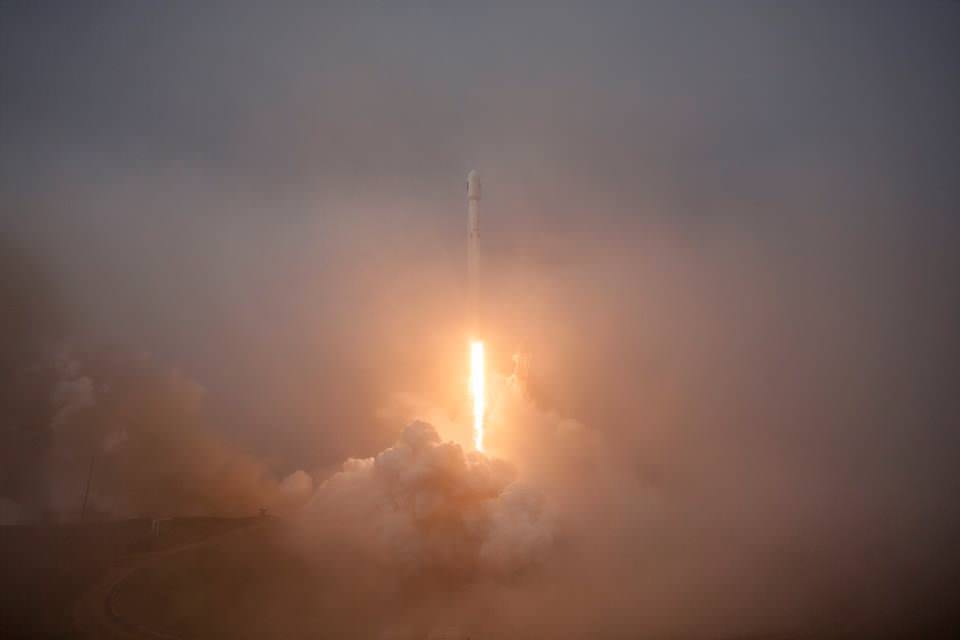
SpaceX’s own secondary goal was to recover the first stage intact to demonstrate rocket reusability.
This was SpaceX’s third try at a barge landing following two near miss endeavors in 2015.
And SpaceX did just accomplish a historic first ever ground soft landing and intact first stage rocket recovery following the ‘Return-to-Flight’ Falcon 9 launch on Dec. 21, 2015 from Cape Canaveral.
Two prior SpaceX attempts at a precision landing on the autonomous spaceport drone ship (ASDS) barge came very close with pinpoint approaches to the oceangoing vessel in the Atlantic Ocean. But the rocket tipped somewhat sideways in the final moments and was destroyed in a hard landing.
Musk’s space vision is to radically slash the costs of launching people and payloads to space by recovering and reflying rockets – built individually at great expense – rather than completely discarding them after a single use.
So after separating from the second stage, the first stage Merlin 1D engine was reignited for propulsive maneuvers guiding the booster back to the football field sized droneship, positioned about 170 miles (280 kilometers) southwest of Vandenberg off the California coast.
The booster successfully soft landed almost dead center on the ASDS named “ Just Read The Instructions” – which put out to sea the day before launch.
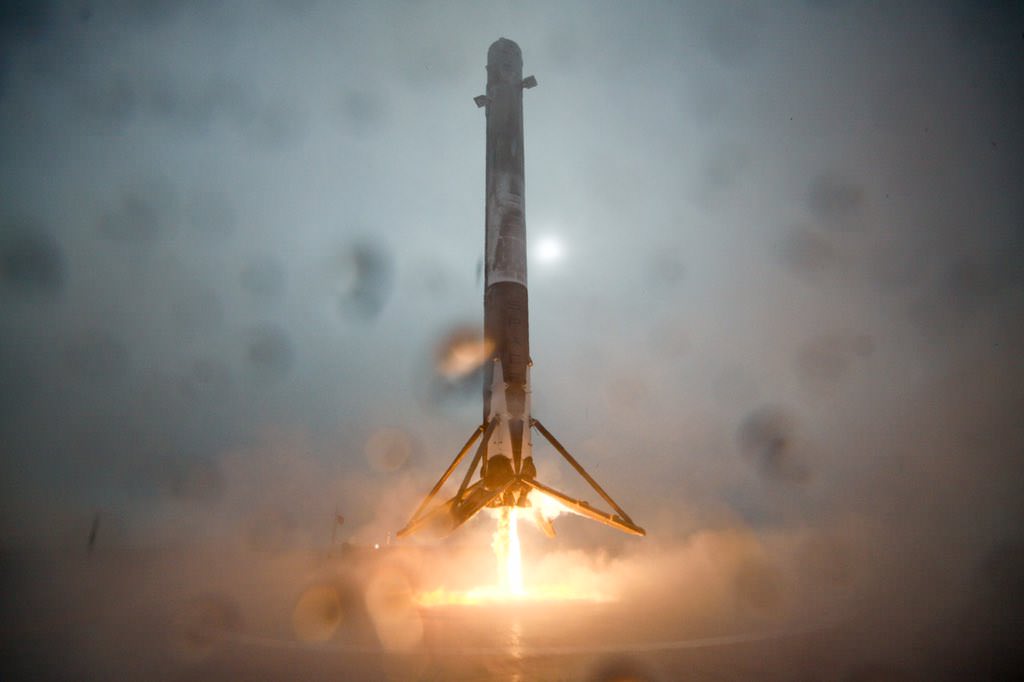
Although SpaceX initially thought the booster made a hard landing, further data review revealed that the rocket in fact made a successful soft landing as the Merlin engine fired like a retro rocket to slow the descent as designed.
“After further data review, stage landed softly but leg 3 didn’t lockout,” SpaceX noted on Twitter. “Was within 1.3 meters of droneship center.
“Touchdown speed was ok,” Musk tweeted.
SpaceX plans many future attempts at rocket recovery at sea and on land and Musk is “very optimistic” on the chances, despite the last second tipover and explosion!
“Well, at least the pieces were bigger this time! Won’t be last RUD [Rapid Unscheduled Disassembly], but am optimistic about upcoming ship landing,” tweeted Musk.
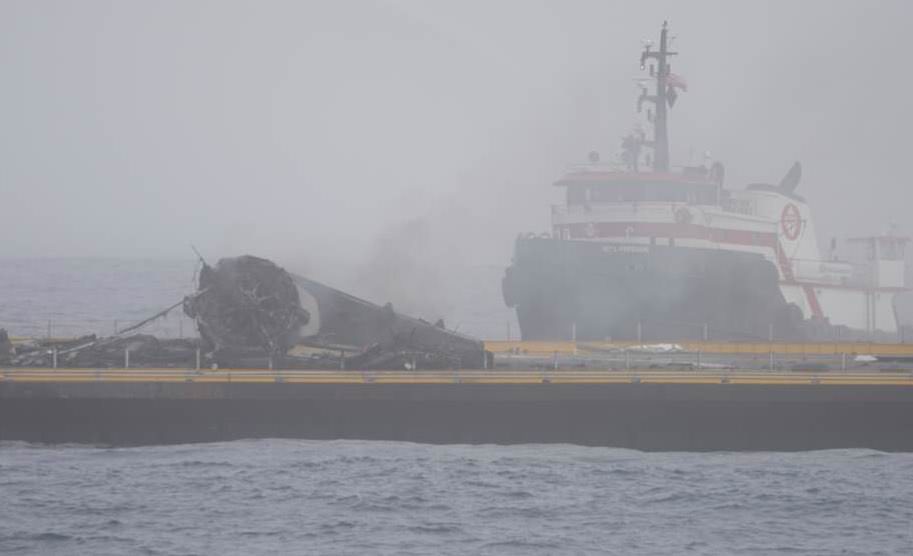
And of course it’s clearly much more challenging to land on a small ship, bouncing around in the waves vs. a large, flat and stable area on the ground – except for the nearby populated areas, businesses and buildings!
“Definitely harder to land on a ship,” Musk elaborated.
“Similar to an aircraft carrier vs land: much smaller target area, that’s also translating & rotating.”
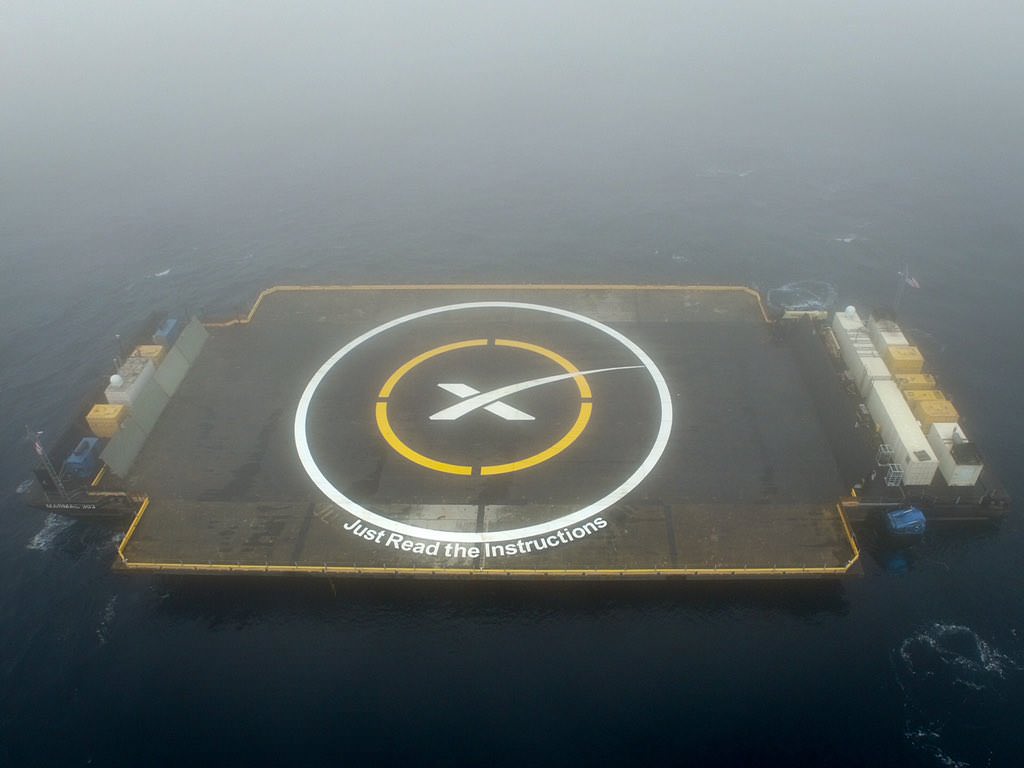
SpaceX has built a dedicated landing pad at Vandenberg AFB that is ready to conduct ground soft landings for returning boosters, similar to what the firm has constructed with Landing Zone-1 (LZ-1) at Cape Canaveral Air Force Station – and used in the successful Dec. 21, 2015 booster recovery landing.
This booster could have landed on the ground at Vandenberg due to the lower ascent velocity of the Falcon 9 rocket.
However, SpaceX chief engineer Hans Koenigsmann said that SpaceX did not receive the necessary environmental permits prior to the Jan. 17 blastoff with Jason-3, at the prelaunch media briefing.
Stay tuned here for Ken’s continuing Earth and planetary science and human spaceflight news.

If ice is suspect, then I wonder if the leg that didn’t lock is directly below the LOX vent(s). If cryo-fuels plus lots of moisture in the air are indeed the culprit, then I’d guess that a blast of standard aircraft de-ice solution just prior to and then also just after tanking ops would solve the problem. Shouldn’t even need to spray down the whole rocket, just the fins and legs.
Any way you slice it this is still a marvelous accomplishment. So very close to perfect even under far less that ideal conditions. Still, bottom line, close but no cigar.
Any way you slice it this is still a marvelous accomplishment. So very close to perfect even under far less that ideal conditions. So, close but no cigar.
Good job and Great launch SpaceX! Geesh… Ice deposits again? Sounds entirely plausible that the ice accumulated before launch or possibly sometime thereafter? What weather did the booster pass through during the ascent and descent? It has been VERY wet here on the left coast.
One liners … in good humor.
– program “break a leg” executed above expectations
– Gracious landing, the after performance bowing needs a rework though
– read the instructions’ font was not large enough
– it proposed right away and didn’t stop after its genuflection
– after a perfect flight, the Falcon had to kiss the ground first thing
– Stretching after a flight might not have the same benifits for Falcons.
– Seaaa, Waaavveess,.. Ugghhhhhhmmmmm bluh
Cheers SpaceX!
I thought Mr. Musk’s comment was one of the best:
“Well, at least the pieces were bigger this time!”
In the words of The Four Seasons/Franki Valli:
“So close… so close, and yet so far.”
Ladies, gentlemen and others, we are (in a way) witnessing a live reenactment of the spectacular series of failures which preceded American spaceflight in the 1960’s here in the present day. Turns out, rocket science = hard, but as SpaceX can firmly now declare first-hand: “RUDs” = progress! ^_^
Keep up the good work, SpaceX!
No doubt the conspiracy theorists will be crying out that the live video feed died just as the reflection of the exhaust was visible on the barge. The later published video probably edited out what was clinging to the side…etc.etc.
Let’s not give them any ideas 😉
I think that “a leg failed to lock” is a mis-diagnosis of the problem. The leg locks just fine, but the rocket is listing, and the leg has inadequate side strength to resist and collapses sideways.
Great feat anyway.
Paul